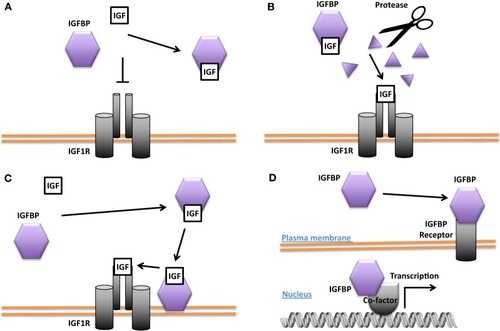Figure 2
- ID
- ZDB-FIG-190723-2041
- Publication
- Allard et al., 2018 - IGF-Binding Proteins: Why Do They Exist and Why Are There So Many?
- Other Figures
- All Figure Page
- Back to All Figure Page
|
Different modes of Insulin-like growth factor-binding protein (IGFBP) actions. |

